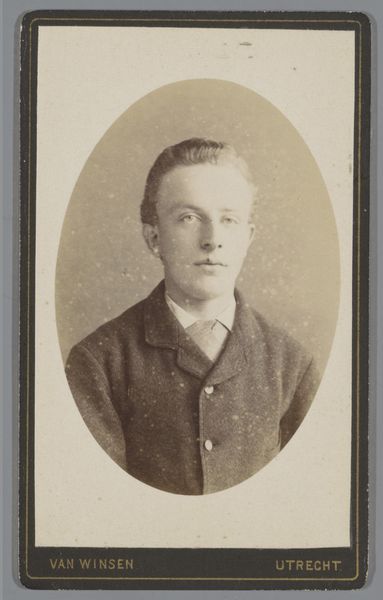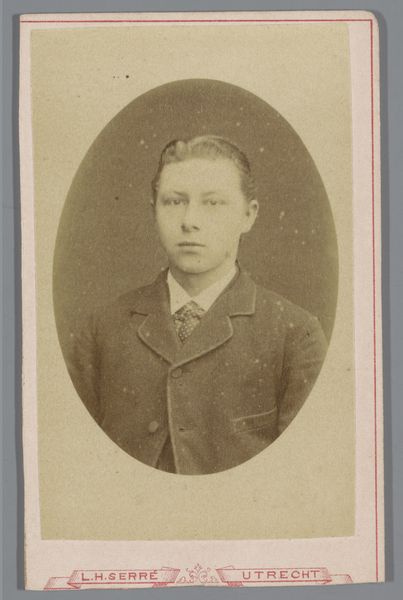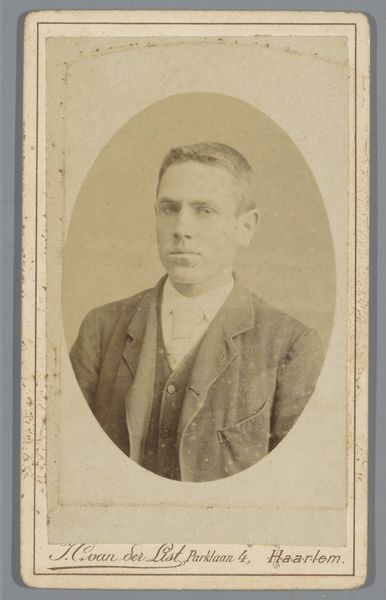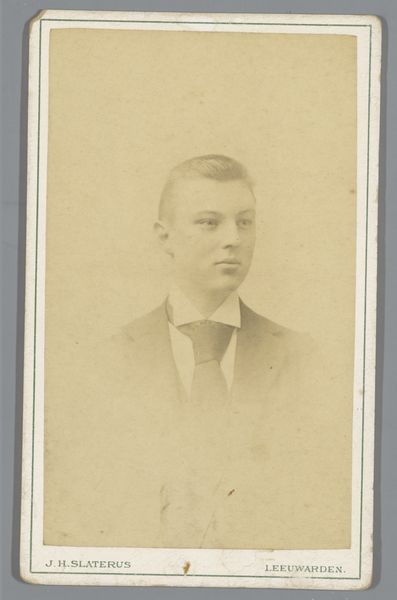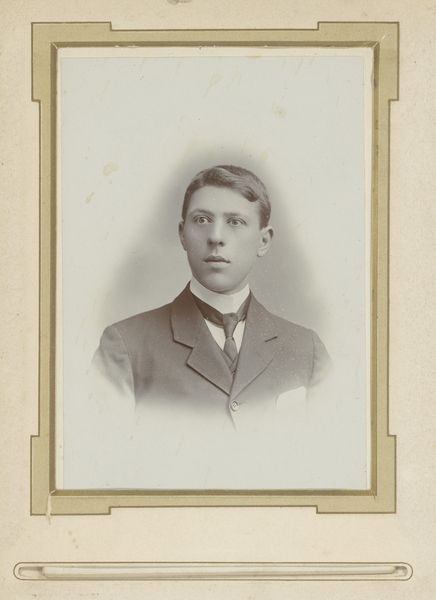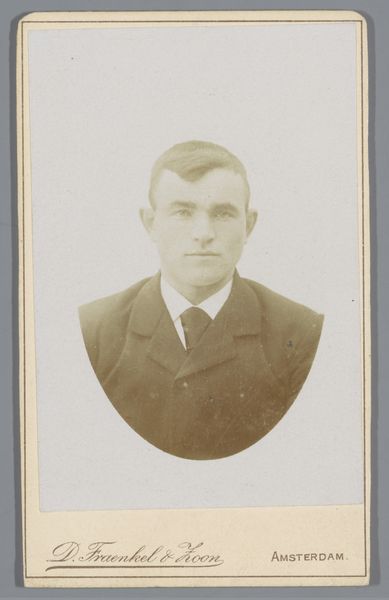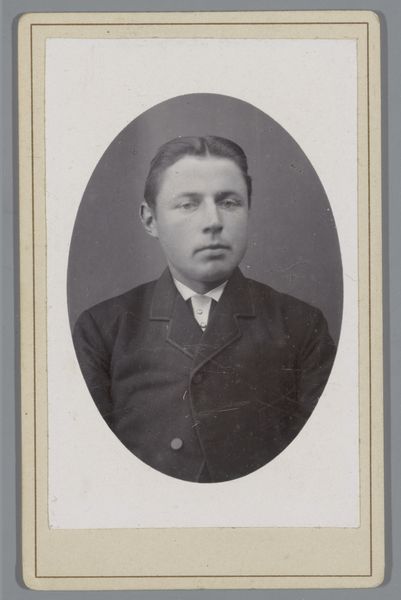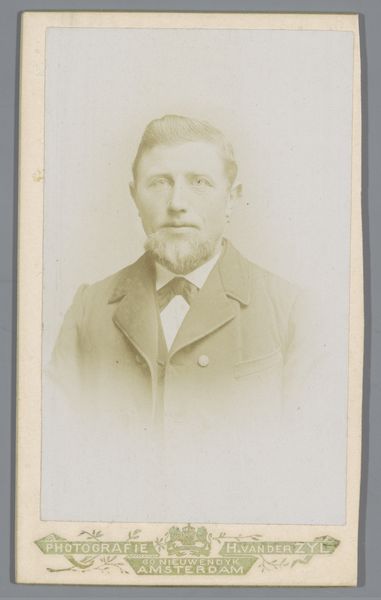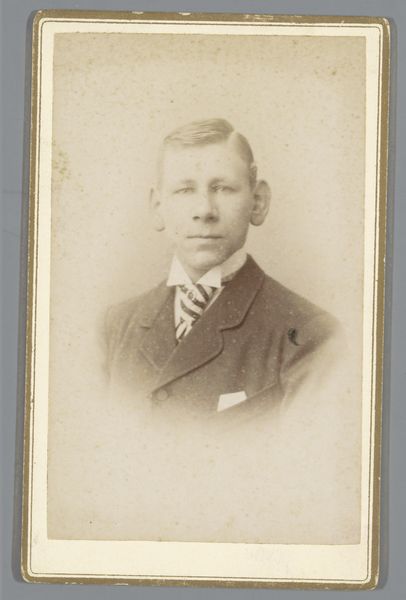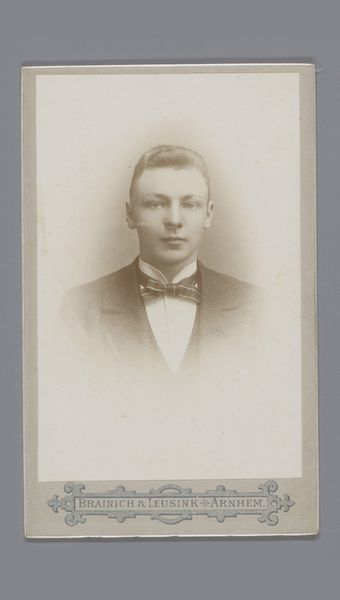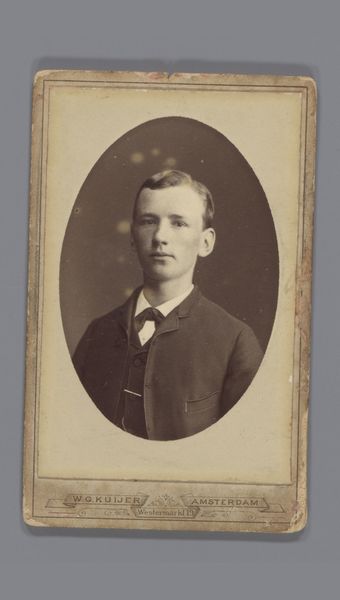
daguerreotype, photography
#
portrait
#
daguerreotype
#
photography
#
framed image
#
19th century
Dimensions: height 105 mm, width 64 mm
Copyright: Rijks Museum: Open Domain
Albert Greiner produced this carte-de-visite, or visiting card photograph, of an unknown man in Amsterdam sometime in the late 19th century. During this period, portrait photography became increasingly accessible. As such, we might think about how these images, like portraiture across painting, could become tools for expressing identity. Looking at the man's clothing we can observe the rising middle class in Europe. His suit and carefully placed pocket square speak to a certain level of economic comfort. But who was he beyond this carefully constructed image? What was his race, ethnicity, social class? What does it mean to encounter this anonymous portrait? I wonder, does the act of viewing give him a kind of immortality, or does it further obscure his true self under layers of interpretation? Photography is not a pure form of historical evidence, but is instead a complex interplay of representation, identity, and historical context.
Comments
No comments
Be the first to comment and join the conversation on the ultimate creative platform.
